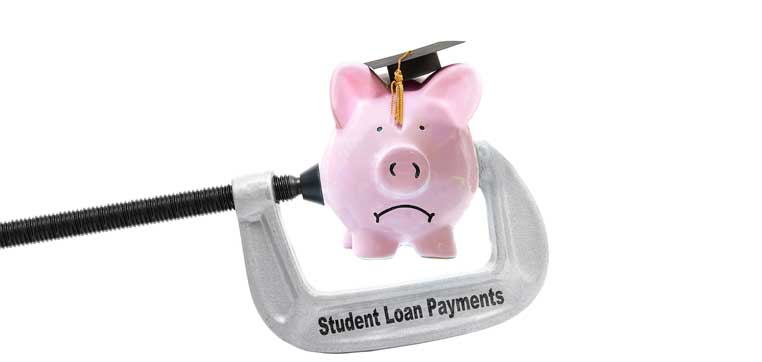 Anyone who has been paying attention to college costs and financial aid has probably heard that there really isn’t one set sticker price for college. It’s a lot like airline tickets. People sitting next to each other on a flight probably paid very different amounts for their tickets depending on when they bought them. Like airline tickets, very few families actually pay the sticker price for college.
Anyone who has been paying attention to college costs and financial aid has probably heard that there really isn’t one set sticker price for college. It’s a lot like airline tickets. People sitting next to each other on a flight probably paid very different amounts for their tickets depending on when they bought them. Like airline tickets, very few families actually pay the sticker price for college.
Costs
Paying for College in Europe
 The following is a guest post by Kevin Newton who specializes in helping students apply to college in Europe.
The following is a guest post by Kevin Newton who specializes in helping students apply to college in Europe.
For many people, the practicality of paying for a degree in Europe is a seemingly insurmountable hurdle. After all, since it is in Europe, surely it has to be more expensive, right? It is pretty well-known that American universities charge international students considerable sums of money to study stateside, so most expect the same for American students in Europe.
The truth is actually quite different. In many cases, studying in Europe is a much cheaper option that studying in the United States.
36 Best Bets for Test Optional Merit Aid
 Think because you’re a miserable test taker, you don’t have a chance at merit aid? Maybe not. If you’re willing to step away from the limelight of prestige and top 50 college rankings, you can find some excellent opportunities among the growing number of test optional colleges. With just a little digging into the data, I came up with 36 possible test optional colleges for merit aid.
Think because you’re a miserable test taker, you don’t have a chance at merit aid? Maybe not. If you’re willing to step away from the limelight of prestige and top 50 college rankings, you can find some excellent opportunities among the growing number of test optional colleges. With just a little digging into the data, I came up with 36 possible test optional colleges for merit aid.
How to Pay Less for College: Understand Supply and Demand
 If you’re trying to figure out how to pay for college, if you’re looking for the best merit scholarship opportunities, you need to understand the basics of supply and demand in higher education. Why? Because we charge students to attend college. Granted, the way we pay for higher education is a complicated mixture of public finance and individual contributions but it’s still part of the market place. There’s a reason why colleges bury high school students in an avalanche of slick brochures and social media invitations–colleges are competing for students willing to pay to attend their version of the “collegiate experience.”
If you’re trying to figure out how to pay for college, if you’re looking for the best merit scholarship opportunities, you need to understand the basics of supply and demand in higher education. Why? Because we charge students to attend college. Granted, the way we pay for higher education is a complicated mixture of public finance and individual contributions but it’s still part of the market place. There’s a reason why colleges bury high school students in an avalanche of slick brochures and social media invitations–colleges are competing for students willing to pay to attend their version of the “collegiate experience.”
50-50 Highlights: Colleges with Decreases in Average Net Price
 Anyone who spends time on this blog should realize that very few people pay the actual published price for college. This makes it difficult to judge the significance of the rising prices of college tuition. A lot of schools, especially public institutions, justify increasing tuition by pointing out that a certain percentage of the increase will go to financial aid.
Anyone who spends time on this blog should realize that very few people pay the actual published price for college. This makes it difficult to judge the significance of the rising prices of college tuition. A lot of schools, especially public institutions, justify increasing tuition by pointing out that a certain percentage of the increase will go to financial aid.
50-50 Highlights: Colleges with the Lowest Student Loan Default Rates
 Given that paying for a college education now rivals buying a house, it isn’t surprising the New York Fed reports that “Balances of student loans have eclipsed both auto loans and credit cards, making student loan debt the largest form of consumer debt outside of mortgages.” Faced with limited financial aid and the prospect of the equivalent of a mortgage payment upon graduating from college, families can’t help but ask if “college is worth it?”
Given that paying for a college education now rivals buying a house, it isn’t surprising the New York Fed reports that “Balances of student loans have eclipsed both auto loans and credit cards, making student loan debt the largest form of consumer debt outside of mortgages.” Faced with limited financial aid and the prospect of the equivalent of a mortgage payment upon graduating from college, families can’t help but ask if “college is worth it?”
50-50 Highlights: Accessible, Quality Colleges for Merit Aid Opportunities
 As I work with college data, I learn about different variables and add them to my data sets. I also occasionally create a variable to more accurately capture a concept or value that I think is important when trying to figure out how much college will cost. This is why you’ll see multiple posts on some variation of a list of colleges with the best financial aid. And because of the variation, you’ll always find some colleges on one list and not another. Well, I’m adding another list of colleges to consider for merit aid.
As I work with college data, I learn about different variables and add them to my data sets. I also occasionally create a variable to more accurately capture a concept or value that I think is important when trying to figure out how much college will cost. This is why you’ll see multiple posts on some variation of a list of colleges with the best financial aid. And because of the variation, you’ll always find some colleges on one list and not another. Well, I’m adding another list of colleges to consider for merit aid.
What Makes an Ivy League Education?
 As I’ve been up dating my spreadsheet, I’ve been reviewing information on college quality and affordability. Looking through the data and how people use it has gotten me thinking about the latest attempts by the government to rate colleges, college rankings, and what makes a good education. As usual, I ended up with more questions than answers.
As I’ve been up dating my spreadsheet, I’ve been reviewing information on college quality and affordability. Looking through the data and how people use it has gotten me thinking about the latest attempts by the government to rate colleges, college rankings, and what makes a good education. As usual, I ended up with more questions than answers.
The First Step to Avoid College Debt
 As the cost of college has sky-rocketed, students are accumulating more and more debt. You hear horror stories of student graduating with over $100,000, $150,000, or $200,000 in college debt just for an undergraduate education. And with tuition at some schools exceeding $60,000 a year, you have to wonder if that high student debt is simply the cost of attending college today?
As the cost of college has sky-rocketed, students are accumulating more and more debt. You hear horror stories of student graduating with over $100,000, $150,000, or $200,000 in college debt just for an undergraduate education. And with tuition at some schools exceeding $60,000 a year, you have to wonder if that high student debt is simply the cost of attending college today?








